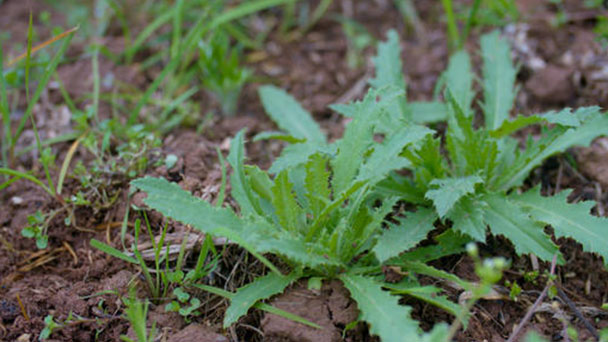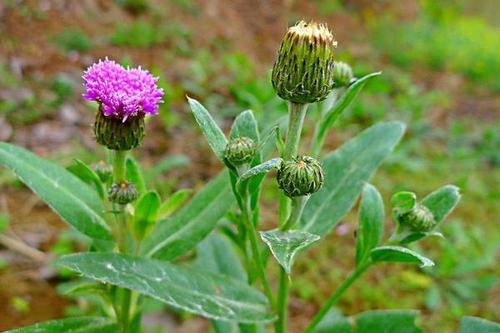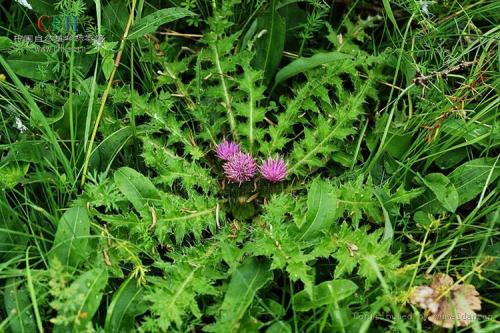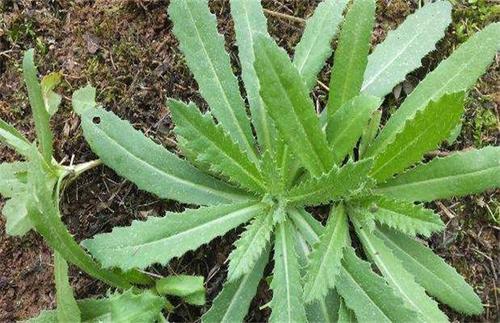Creeping Thistle profile
Written by Maggie
Dec 22 2020

Creeping Thistle is a high-quality vegetables.Herbs perennial, subterranean often larger than overground.

Creeping Thistle morphological characteristics
Creeping Thistle is perennial herb, with a Creeping rhizome. The stem is ribbed, a young stem covered with white spider filamentous hair.
Central leaf and stem leaves are elliptic, oblong, or elliptical oblanceolate, apex obtuse or rounded, base cuneate, sometimes with very short petiole, usually without petioles, 7 to 15 cm long, 1.5 to 10 cm wide, upper stem leaves smaller, elliptic or lanceolate or linear, lanceolate, or all of the leaf is not divided, describing a leaf margin of acupuncture, acupuncture and close to the margin. Incisors or margin, apical needling of different sizes, up to 3.5 mm, or most stem leaves pinnate lobed or cleft or margin thick circular serrate, lobes or serrate oblique triangular, tip blunt, apex and lobes with longer needling, margin and lobes with shorter adherent needling.
All stems and leaves are of the same color on both sides, green or pale under, glabrous on both sides, rarely glabrous on both sides, green above, glabrous on upper, gray under with sparse or dense downy, rarely glaucous on both sides, thinly tomentose on both sides.
Creeping Thistle inflorescence is a solitary stem terminal, or plants with a few or many heads arranged in cymbals at the top of the stem branches.Involucral bracts ovate, oblong or ovoid, 1.5 -- 2 cm in diameter. Involucral bracts ca. is 6 layers, imbricate, gradually lengthening toward inner layer, outer layer and middle layer 1.5-2 mm wide, including tip needle 5-8 mm long; The inner and innermost layers are elliptic to linear, 1.1-2 cm long and 1-1.8 mm wide;T he apex of the middle and outer bracts has short needle less than 0.5 mm in length, the inner and innermost layer acuminate, membranous, short needle.
Small purplish red or white flowers, female corolla 2.4 cm, corolla 6 mm, corolla filiform, 18 mm, bisexual flowers 1.8 cm, corolla 6 mm, corolla filiform, 1.2 mm. Achenes are pale yellow, elliptic or obliquely elliptic, flattened, 3 mm long by 1.5 mm wide, apically obliquely truncated. Creeping Thistle crown hair is dirty white, multi - layered, whole off; Crested bristles are long feathery, 3.5 cm long, tapering apically. Flowering period is from May to September.
Creeping Thistle habitat distribution
Creeping Thistle mesophytes, adaptability is very strong, any climate can grow, universal group, was born in abandoned land, cultivated land, the side of the road, near the village, for the common weed.
In addition to Xizang, Yunnan, Guangdong, Guangxi, several times around the country. Creeping Thistle is widely distributed in eastern Europe, central Europe, Eastern Soviet union, west Siberia and Far East, Mongolia, Korea and Japan.Type specimens from Poland.

Creeping Thistle propagation method
Propagation technology
Creeping Thistles propagate by seed. In June and July, collect seeds when the bud Withers, dry them in the sun and set aside. Seeds were sown in early spring in 2-3 months, and hill-planting was performed according to rows of plants spaced at 20cm×20cm apart. Seeds were mixed well with grass and wood ash and seeded in the caves, covered with soil, and watered with no seeds covered. Keep the soil moist often until it sprouts.
Creeping Thistle field management
For 6-10cm of seedlings, the seedlings were replenished, 3-4 seedlings were left in each hole, and combined with ploughing and weeding, the second time in May was ploughed and weeding combined with human and animal manure.
Harvesting and storage
In may or June, when in full bloom, cut the whole grass for drying or fresh use.

Creeping Thistle main value
Medicinal value
Creeping Thistle can cool blood and stop bleeding, remove stasis and reduce swelling. It can treat epistaxis, vomiting blood, urine blood, stool blood, leakage of blood, traumatic hemorrhage, carbuncle swollen sore.
Edible value
Creeping Thistle is as young period sheep, pigs like food, cattle, horses less food. Things remain green plant, still can be used to feed pigs, Creeping Thistle with hard spines, stem lignification hard, after using period of 5 - July.In the early stage, it can be used for grazing or harvesting with roots. After removing the soil, it can be cut up and fed to pigs or silage. After flowering, the plants can be cut and exposed to the sun, which can be used for feeding pigs with winter and spring powder. In addition Creeping Thistle is a fall honey plant. The whole grass or rhizome are medicinal materials. The tender shoots of prickly ash are wild vegetables, fried food, soup can be done.
Latest Updated
- Benefits of Bugleweed - 7 Science-backed Health Benefits
- Bugleweed Dangers & Side Effects - Is It Poisonous?
- How to Plant Evergreen Trees - What You Should Know
- When to Plant Evergreens - Grow Guide for Evergreen Trees
- 12 Wonderful Evergreen Shrubs for Your Garden
- 12 Popular Evergreen Plants with Pictures for Beginners
- When And How To Prune A Lilac Bush Like a Pro
- How to Grow & Care for Lilac Vine (Hardenbergia Violacea)
- Japanese Lilac Tree (Syringa Reticulata) Care & Propagation Guide
- Shumard Oak Pros and Cons - What to Know
Popular Articles
- Winter maintenance of Antirrhinum Majus
- How to Grow Terminalia Mantaly Tree
- How to Grow and Care for Crossostephium Chinense
- How to grow Antirrhinum Majus in spring
- Peristeria Elata (Dove Orchid) Profile: Info & Care Guide
- Underwatered Snake Plant (Sansevieria Trifasciata) - Signs And How To Fix
- How to Care for Brazilian Jasmine Plant (Mandevilla Sanderi)
- How to Grow & Care for Graptopetalum Purple Delight in Summer
- Rosa Chinensis (China Rose): Plant Growing & Care Tips
- How to Care for Baby Sun Rose (Aptenia Cordifolia)